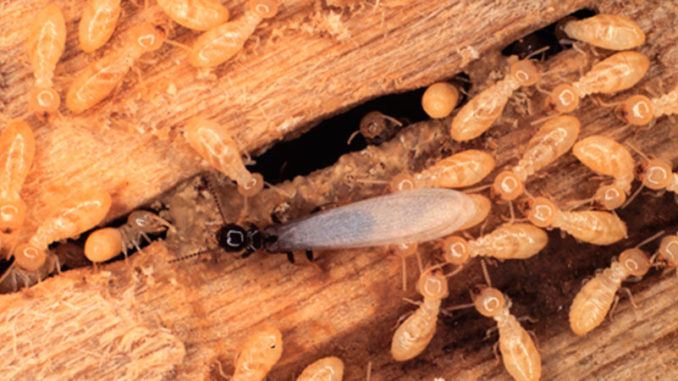
Protecting a home from termites
Those swarming insects around lights are termites, mostly the Formosan species that has been nicknamed the “super termite” for its ability to damage a home.
“We have several native species, which are divided into dry wood and subterranean species,” said Andre’ Brock, St. Charles Parish Ag Center agent. “The Formosans are our biggest concern. They’ve been in the New Orleans area since the 1950s.”
Brock said the vast majority of termites swarming are typically Formosans, and they typically do it through late May.
“You will see those immense swarms of termites this year and every year,” he said.
This is a subterranean burrower looking for places to land, particularly in search of the wood in houses, condominiums, boats and even trees. The potential for damage comes with their large size colonies and ability to consume wood at a rapid rate.
Reports are coming they are swarming throughout the parish, according to area exterminators. Brock added his phone is also about to start ringing about them being outside and inside houses.
“If you find them on the counter or couch, there’s nothing you can do, but you can turn off exterior lights,” Brock said. “Just have a professional termite contract and be sure to be licensed and insured.”
Named for Taiwan’s former name of Formosa, they are a space invader or what is commonly called an invasive species. Brock said they came from Taiwan into the ports of New Orleans and Mobile after World War II, hitch hiking from buildings demolished from the war into Louisiana.
“We’re pretty much ground zero for them,” Brock said. “They mostly swarm in the evening and are attracted to light. It looks like a snow storm.”
[pullquote]“We’re pretty much ground zero for them. They mostly swarm in the evening and are attracted to light. It looks like a snow storm.” – Andre’ Brock[/pullquote]While nearly every species of termite swarms at a certain time, certain ones are preprogramed in the right weather conditions to swarm, he said.
“Any one of those termites could land on your house and make its way in and hollow out all your wood,” Brock warned.
He advised getting a professional to protect a structure, particularly with their ability to damage a home in as few as three months. Because they recycle their own moisture among themselves, this termite isn’t controlled by the standard chlordane pesticide.
Bait stations placed around the house do help, Brock said. They contain a chemical that is brought back to a colony and kills it.
They get into trees and, if touching the house, they will get inside the structure so keep space between them, he said.
“Keep mulch at least six feet away from the house,” Brock said. “They make little mud tunnels, which is used to help identify they are there,” he said.
Formosans are also the only species known to eat live Cypress.
Like the fire ant, this termite excretes formic acid and will use it on metal to get to wood.
“There’s nothing they won’t eat,” Brock said. “They’ll eat metal, softer metals like aluminum.”
Beware the Formosan termite
- Nicknamed the “super-termite” because of its destructiveness.
- A single colony can have several million termites.
- The Formosan can cause serious structure damage in as little as three months.
- A mature colony can consume as much as 13 ounces of wood a day.




Be the first to comment